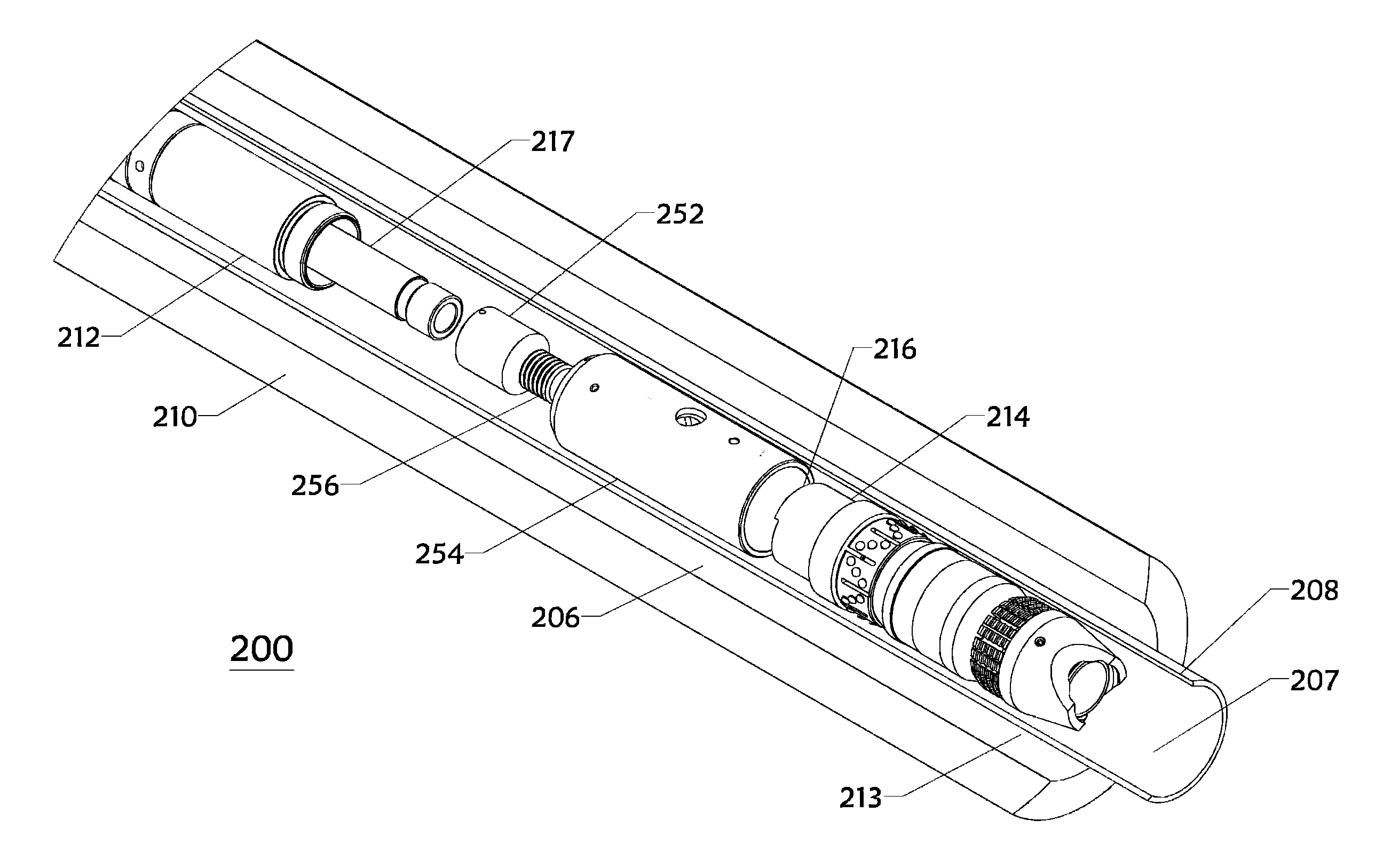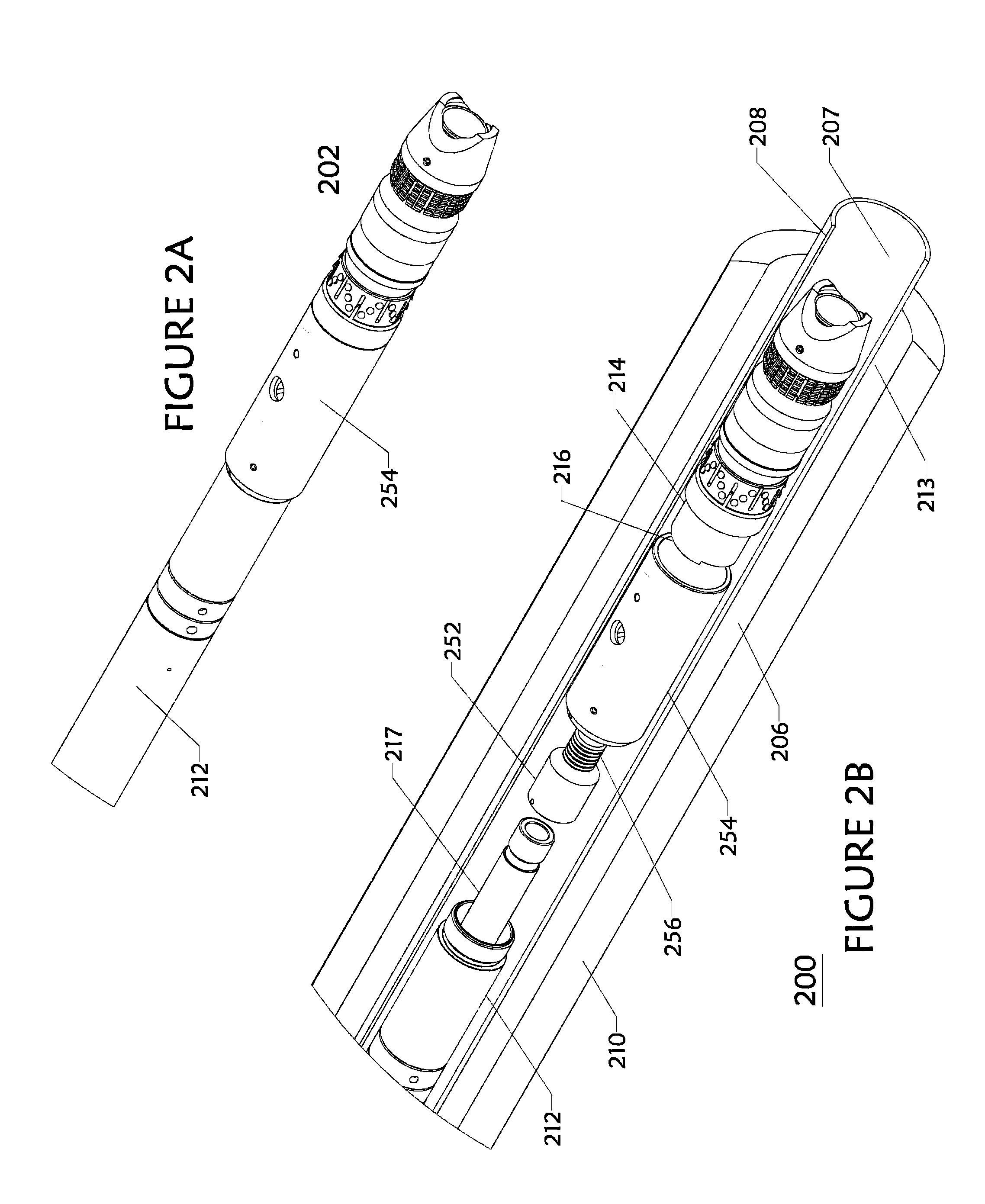Downhole tool and method of use
- Summary
- Abstract
- Description
- Claims
- Application Information
AI Technical Summary
Benefits of technology
Problems solved by technology
Method used
Image
Examples
Embodiment Construction
[0063]Herein disclosed are novel apparatuses, systems, and methods that pertain to downhole tools usable for wellbore operations, details of which are described herein.
[0064]Downhole tools according to embodiments disclosed herein may include one or more anchor slips, one or more compression cones engageable with the slips, and a compressible seal element disposed therebetween, all of which may be configured or disposed around a mandrel. The mandrel may include a flow bore open to an end of the tool and extending to an opposite end of the tool. In embodiments, the downhole tool may be a frac plug or a bridge plug. Thus, the downhole tool may be suitable for frac operations. In an exemplary embodiment, the downhole tool may be a composite frac plug made of drillable material, the plug being suitable for use in vertical or horizontal wellbores.
[0065]A downhole tool useable for isolating sections of a wellbore may include the mandrel having a first set of threads and a second set of th...
PUM
 Login to View More
Login to View More Abstract
Description
Claims
Application Information
 Login to View More
Login to View More - R&D
- Intellectual Property
- Life Sciences
- Materials
- Tech Scout
- Unparalleled Data Quality
- Higher Quality Content
- 60% Fewer Hallucinations
Browse by: Latest US Patents, China's latest patents, Technical Efficacy Thesaurus, Application Domain, Technology Topic, Popular Technical Reports.
© 2025 PatSnap. All rights reserved.Legal|Privacy policy|Modern Slavery Act Transparency Statement|Sitemap|About US| Contact US: help@patsnap.com



